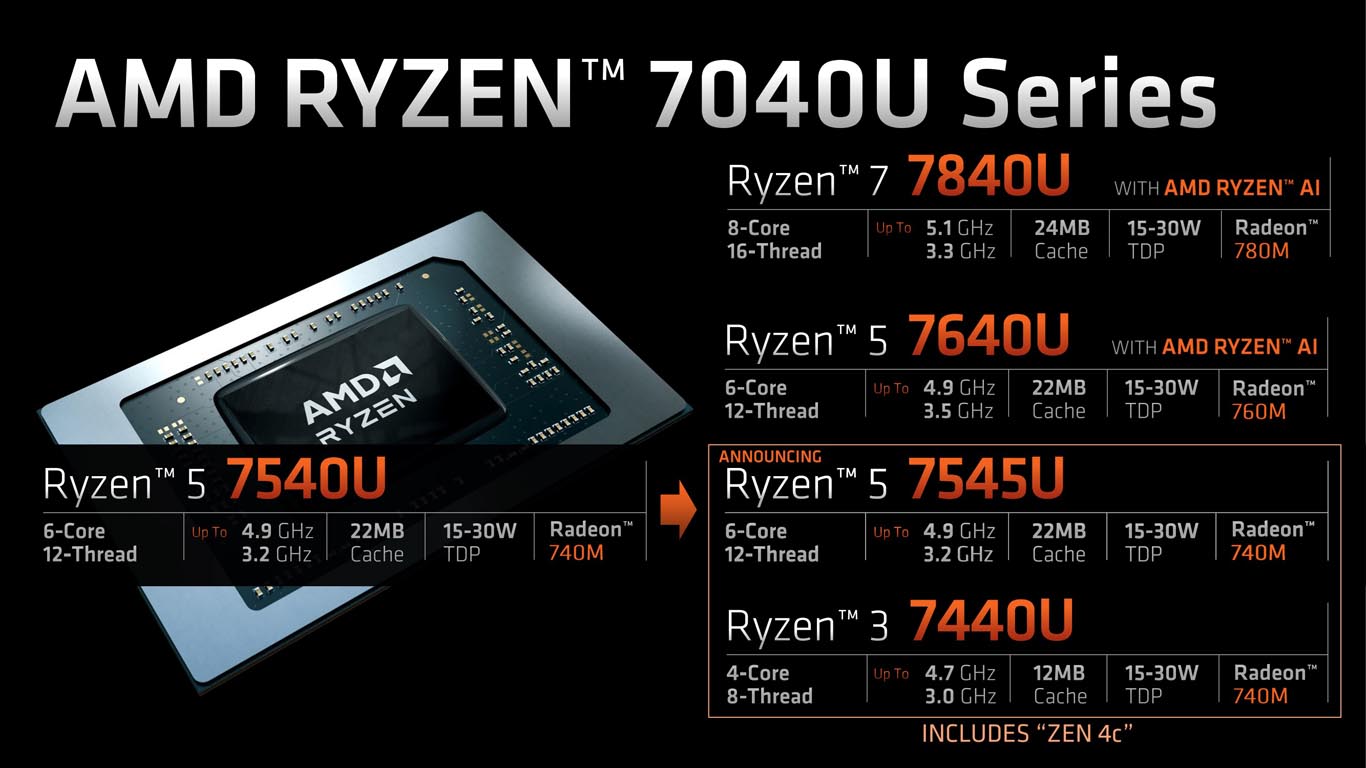Last week, AMD officially unveiled a new subset of the ‘Zen 4’ architecture specially designed for the mobile computing sector, known as ‘Zen 4c” and the associated Ryzen 7040U series models.
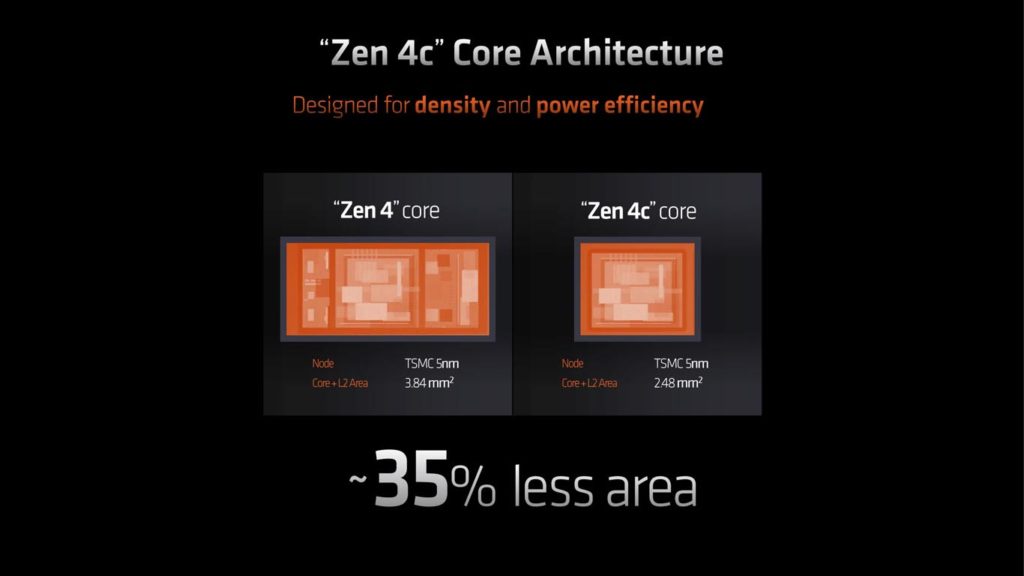 For those considering the upcoming ‘Zen 4c’ laptops in hopes of improved performance, you might be disappointed because this new core architecture prioritizes efficiency instead.
For those considering the upcoming ‘Zen 4c’ laptops in hopes of improved performance, you might be disappointed because this new core architecture prioritizes efficiency instead.
The most significant change is a 35% reduction in die size, making it more compact than the standard ‘Zen 4.’ This trade-off results in lower clock speeds and a smaller package.
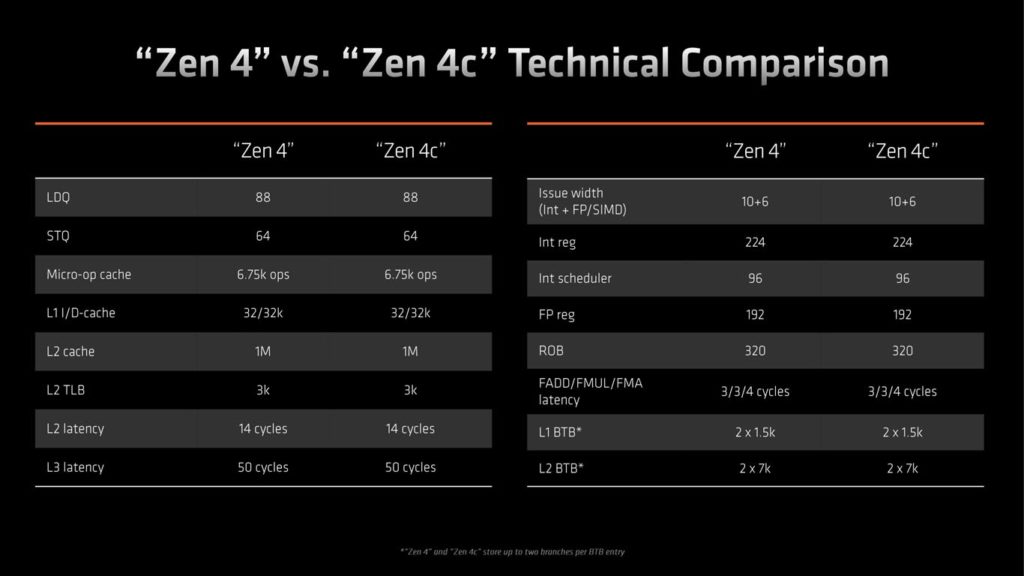 That summarizes the primary physical difference between ‘Zen 4’ and ‘Zen 4c, as all other technical specifications remain identical.
That summarizes the primary physical difference between ‘Zen 4’ and ‘Zen 4c, as all other technical specifications remain identical.
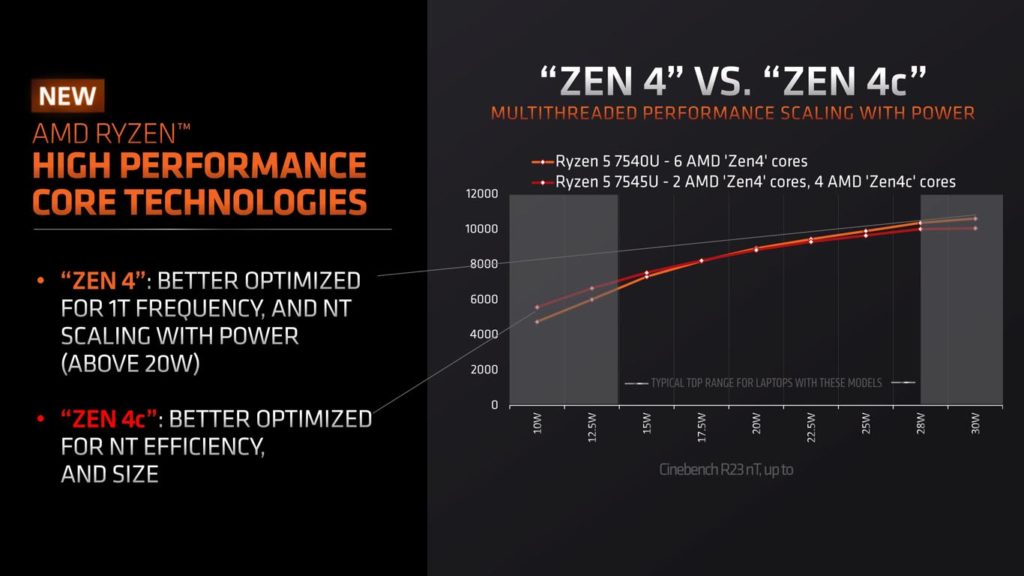 An illustrative graph from the official source demonstrates the comparison between both architectures. In higher wattage scenarios, the standard ‘Zen 4’ outperforms ‘Zen 4c’ by achieving higher multi-threaded benchmark scores due to its ability to boost higher.
An illustrative graph from the official source demonstrates the comparison between both architectures. In higher wattage scenarios, the standard ‘Zen 4’ outperforms ‘Zen 4c’ by achieving higher multi-threaded benchmark scores due to its ability to boost higher.
Conversely, in lower wattage settings, ‘Zen 4c’ takes the lead, highlighting its enhanced efficiency in effectively utilizing the power given to it – something that is always “limited” in portable devices like laptops and the recent handheld gaming device fever.
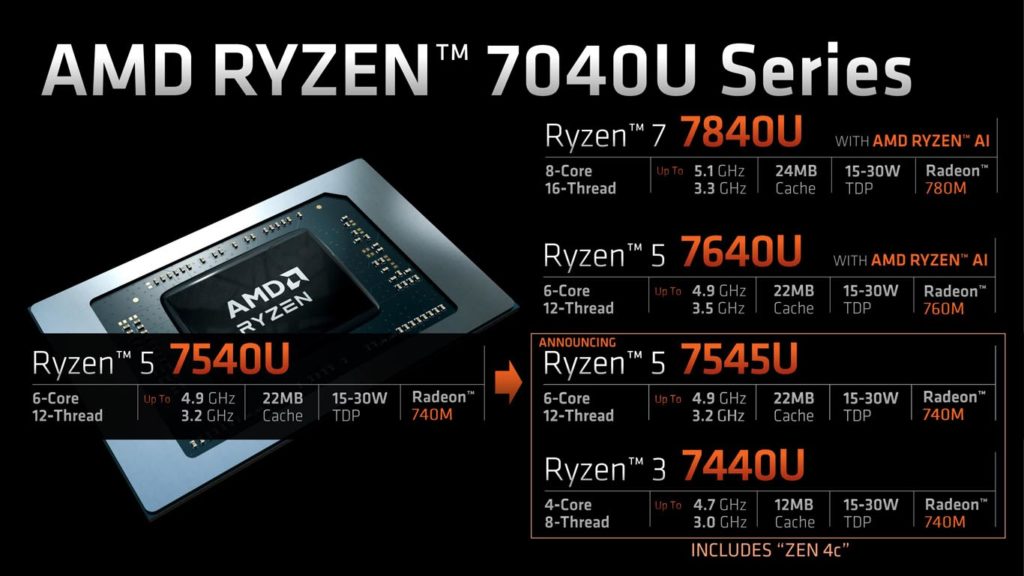 While the rest of the Ryzen 7040U series remains unchanged, two new SKUs are introduced. These are the Ryzen 5 7545U, featuring 2x Zen 4 and 4x Zen 4c cores, and the Ryzen 3 7440U, configured with 1x Zen 4 and 3x Zen 4c cores.
While the rest of the Ryzen 7040U series remains unchanged, two new SKUs are introduced. These are the Ryzen 5 7545U, featuring 2x Zen 4 and 4x Zen 4c cores, and the Ryzen 3 7440U, configured with 1x Zen 4 and 3x Zen 4c cores.
It’s worth noting that the 7545U incorporates Zen 4c cores, distinguishing it from the pure Zen 4-equipped 7540U. However, the 7440U might confuse consumers in the long run and we are not even sure if AMD will discontinue the pure Zen 4 version in the future.
Availability
Products equipped with these new chips are expected to enter the market either before the end of 2023 or in early 2024.


